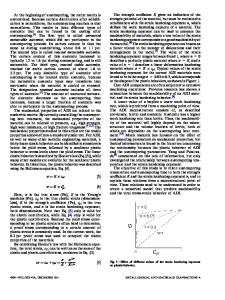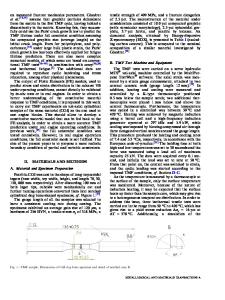Effect of austempering treatment on lubricated sliding contact of compacted graphite iron
- PDF / 2,459,956 Bytes
- 10 Pages / 595.276 x 790.866 pts Page_size
- 2 Downloads / 357 Views
Effect of austempering treatment on lubricated sliding contact of compacted graphite iron Daniela Wollmann1 · Giuseppe Pintaude1 · Rohollah Ghasemi2 Received: 17 July 2020 / Accepted: 27 October 2020 © Springer Nature Switzerland AG 2020
Abstract Significant research has been done to improve the wear properties of the components used in internal combustion engines. Excessive wear is observed in components such as cylinder liners and rings, which can lead to lower volumetric efficiency of the engine, increase oil consumption, polluting emissions, and scuffing related issues. Since tribological systems in internal combustion engines are complex, the different wear mechanisms involved need to be investigated to improve the life of components. Cast irons are commonly used for engine components, especially compacted graphite irons (CGI) for piston rings and gray cast irons (GCI) for cylinder liners. This work aims to evaluate the tribological behavior of two different microstructures of CGI (pearlitic and ausferritic), sliding on pearlitic GCI. The samples of CGI with different microstructures and hardness were evaluated in a short-stroke reciprocating sliding tester, using Petronas Urania SAE 30 API CF lubricant oil at 100 °C for four hours. The characterization of worn surfaces was made using a scanning electron microscope (SEM) and 3D roughness measurements. The coefficient of friction (COF) comparison between the two CGI microstructures showed very similar results with COF = 0.11. The pearlitic CGI showed more severe wear than the austempered one, confirmed by SEM images and the difference in topography parameters before and after the tests. Phosphorus, sulfur, and zinc were detected by EDS analyses in the samples’ worn-out regions, indicating the formation of tribo-films, which was further confirmed by the friction tests. Keywords Compacted graphite iron · Austempering · Piston rings · Cylinder liners
1 Introduction Cast iron is a relevant material due to its low cost and good tribological behavior; however, it lacks suitable mechanical properties. Hence, it is commonly applied for conditions where a combination of wear and heat is important considerations, such as piston ring-cylinder liner systems [1, 2]. Much research has been carried out on cast iron to improve the microstructures to fulfill both its superior mechanical and tribological performance in such severe wear applications, mainly where the weight reduction and saving energy are extra essential considerations [3–5]. By showing superior fatigue limit together with excellent thermal conductivity,
compacted graphite iron (CGI) is an alternative replacing gray cast iron (GCI) [6] in wear application in both piston rings and cylinder liners. These excellent combined mechanical, physical, and tribological properties of CGI are associated with the graphite particles’ inter-connected coral-like morphology between nodular and lamellar shapes. Some strategies have been adopted to improve wear resistance of the CGI alloys, using the laser hardening technique
Data Loading...










